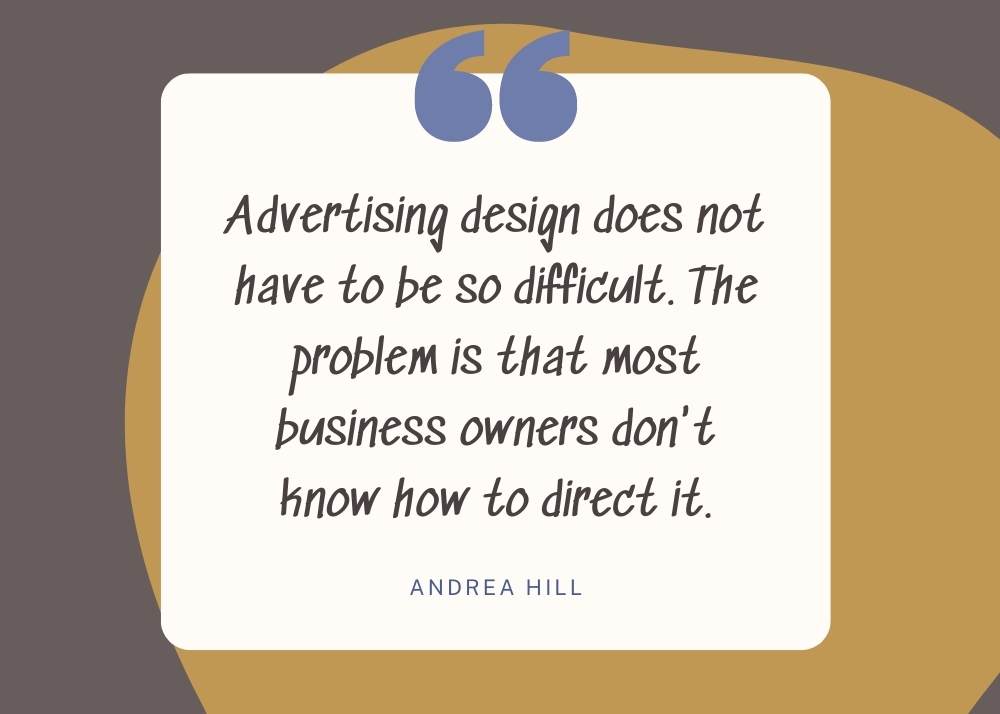Directing the creation of an advertisement, web page, or direct mail promotion can cause the most stalwart small business owner to develop indigestion. As challenging as it may be to determine where, when and how much to promote, that effort pales in comparison to designing or directing the design of the promotion.
The most common complaint of business owners is that the graphic designer or copywriter does not fully understand the product or service or cannot convey the message in a meaningful way to the prospective customers. This problem is complicated by the fact that most business owners are not trained art directors or advertising designers. Soon the designer begins grumbling about insufficient design direction and the business owner begins grumbling about mounting costs and missed deadlines.
Sometimes the business owner decides to just do it herself. But when an amateur positions herself in front of a blank screen to design a page or write compelling copy, the result is like Novocain to the brain. So many decisions must be made, including colors, shapes, positions, photographs, fonts, headlines, and body copy. Some small business owners decide not to advertise rather than put an unflattering promotion before the public.
Promotional design does not have to be so difficult. The problem with most efforts is that the design process is the middle of an effort that has a clear beginning – a beginning most business owners do not understand or complete. This is the equivalent of building the first floor of a house before digging the basement and pouring the foundation. Advertising and promotional dollars are generally best spent promoting a brand or a business over single product promotions. The most important thing a business owner can do to ensure quality promotions is to develop descriptions for the following eight characteristics:
1. Competitive environment. This important overview identifies the competition and discusses how your business differentiates itself from its competitors, including what competitive advantage you enjoy and plan to exploit.
2. Target audience. A detailed description of the most likely customers for the product or service being offered. This should include information regarding who the prospects are currently purchasing from and all customer needs, habits, and behaviors that must be satisfied.
3. Core values. When a business understands the values it stands for it can consistently convey those values through copy, graphics, and service policies. Much as mature individuals prioritize and demonstrate consistency of behavior based on sound value systems, business benefits from the same consistency.
4. Most important message. Based on a sound understanding of the core values, distill those values into a statement that conveys the reality of the business and explains why the business exists.
5. Brand personality. Very few people beyond the age of eight establish meaningful relationships with objects, and a business is an object. If your business were a person, who would that person be? Describe that person as if they were a character in a novel. Hint: it's not necessarily you.
6. Voice, tone and image. Building on the work in #5, decide how this person speaks, what types of words they use, and what type of image they convey to others. The work of #5 and #6 is the process of anthropomorphizing your brand.
7. Reasons to act or believe. This is the list of emotional and rational reasons for prospective customers to act on or believe in your offer. For example, a rational reason to buy a new dress is because I need a new dress for my office party. An emotional reason to buy a new dress is because it will make me look beautiful. Customers require both rational and emotional reasons to act.
8. Sensory and emotional triggers. Though this section may seem silly, it is both a great deal of fun and a big help to the person designing and writing your promotion. Consider the colors, textures, aromas, sounds, visual imagery, and tastes you would like customers to associate with your offer. Once you have developed a cogent list, make sure the elements work harmoniously together. For instance, does your offering taste more like grape juice or single malt scotch? If single malt scotch is the answer, but the smell you associate it with is cotton candy, does that make sense?
Once these eight issues have been addressed, all that remains for each subsequent promotion is to draft a succinct statement about what the promotion is expected to achieve. This statement should include goals regarding customer perception, sales, and lead generation.
From a promotional design standpoint, the process of developing these eight elements will make the job of developing logos, selecting headlines, writing meaningful copy, and choosing colors and fonts significantly easier for whoever designs the advertising promotion. From a customer standpoint, the resulting consistency will contribute to an enhanced understanding of your brand that will lead to repeat business and customer loyalty.
(c) 2008. Andrea M. Hill











